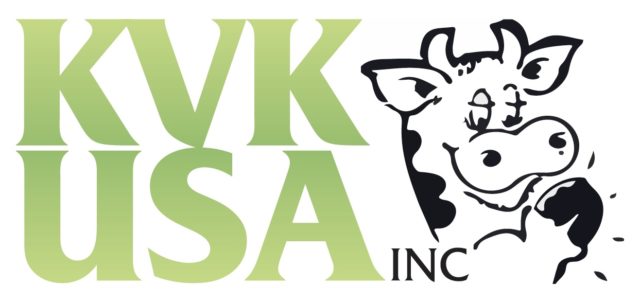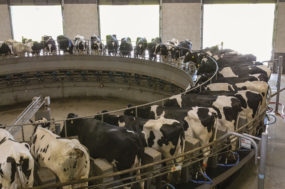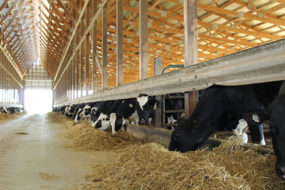Individuals representing the public utility commission, the power grid, the Chesapeake Bay Commission and the dairy farm population were all in attendance at the most recent Pennsylvania Dairy Power Stakeholders roundtable discussion. The meeting was held earlier this month and served as a platform for the group to discuss opportunities and obstacles to expanding renewable energy production on Pennsylvania dairy farms.
As the nation’s fifth largest dairy state, Pennsylvania is home to 540,000 dairy cows producing about 10.75 billion pounds of manure annually. On-farm biogas recovery presents a huge under-tapped resource of renewable energy for the commonwealth.
“Methane digesters offer the farm and community very tangible benefits, including odor control, improved water and air quality, improved nutrient management, and the opportunity to incorporate food waste and other substrate material,” said John Frey, executive director of the Center for Dairy Excellence, the organization that hosted the meeting.
“Bringing together the stakeholders that can collectively ‘move the needle’ on profitable dairy-generated energy production in Pennsylvania could provide significant benefits for our industry and for the individual dairy farm businesses.”
This is the third time this group has met in the past fourteen months.
At the second meeting, held in January, the group identified as its goal “to leverage our collective interests to identify barriers and explore solutions for increased adoption of biogas production using anaerobic digestion (methane digester) technology on Pennsylvania dairy farms.”
This goal has served as the foundation for the discussion of the May meeting, which centered around regulatory, permitting and cost issues that are associated with methane energy production on the farm.
David Dunn, developer of the Central Vermont Public Service (CVPS) Cow Power Initiative, joined the group at this meeting to share how Vermont has linked farms, renewables and customers to expand on-farm methane energy production.
“The Cow Power initiative started as a discussion we had internally at CVPS on how we as a public utility could make methane digesters work for the farm and for our society,” Dunn told the group.
“Cow Power, or methane energy production, was relatively easy to control and manage on our power grid system, providing a good 24-hour supply of energy. However, the initial investment on the farm was significant.
“Our community stepped up and committed to paying more for the ‘Cow Power,’ which provided farms with a new stream of revenue, our customers with a renewable energy choice, and us with tools to protect the environment,” he said.
“Some of our customers did it because it felt good, and others did it because it was good for their business. In the end, we like it because it is supporting the fabric of Vermont by supporting local businesses.”
Dunn explained how “Cow Power” works. Customers commit to paying a 4-cent premium for some or all of their electricity, knowing that four cents is paid directly to the farm.
Currently the program is helping to produce energy for more than 3,000 customers. Farms produced more than 55,400,000 kWh of electricity for CVPS through May 2012 and received $2.2 million in premiums through the program.
The group discussed whether a program like “Cow Power” was feasible in a de-regulated power system like Pennsylvania’s. Dunn explained the most significant advantage of the program was the ability to connect customers with their neighbors – the farmers – as a way to produce energy to meet local needs.
The group agreed to continue discussions around methane energy production and how to identify solutions for expanding production in the commonwealth.
“The biggest benefit of a group like the [Dairy Power Stakeholders] meeting regularly is knowing that there are advocates working on behalf of this issue in various segments of the industry,” said Mike Brubaker, a partner at Brubaker Farms in Mount Joy, Lancaster County. PD
—From Center for Dairy Excellence news release



